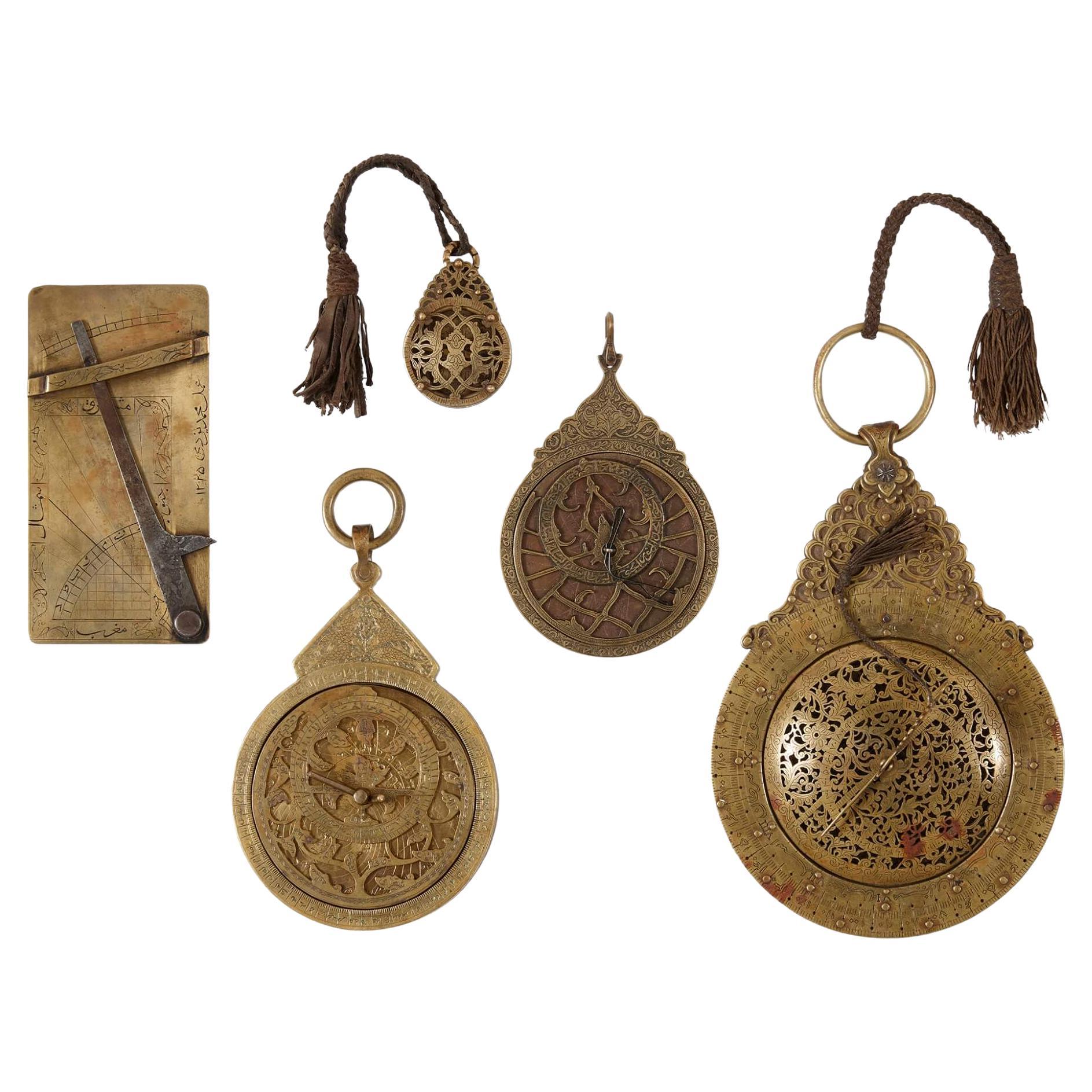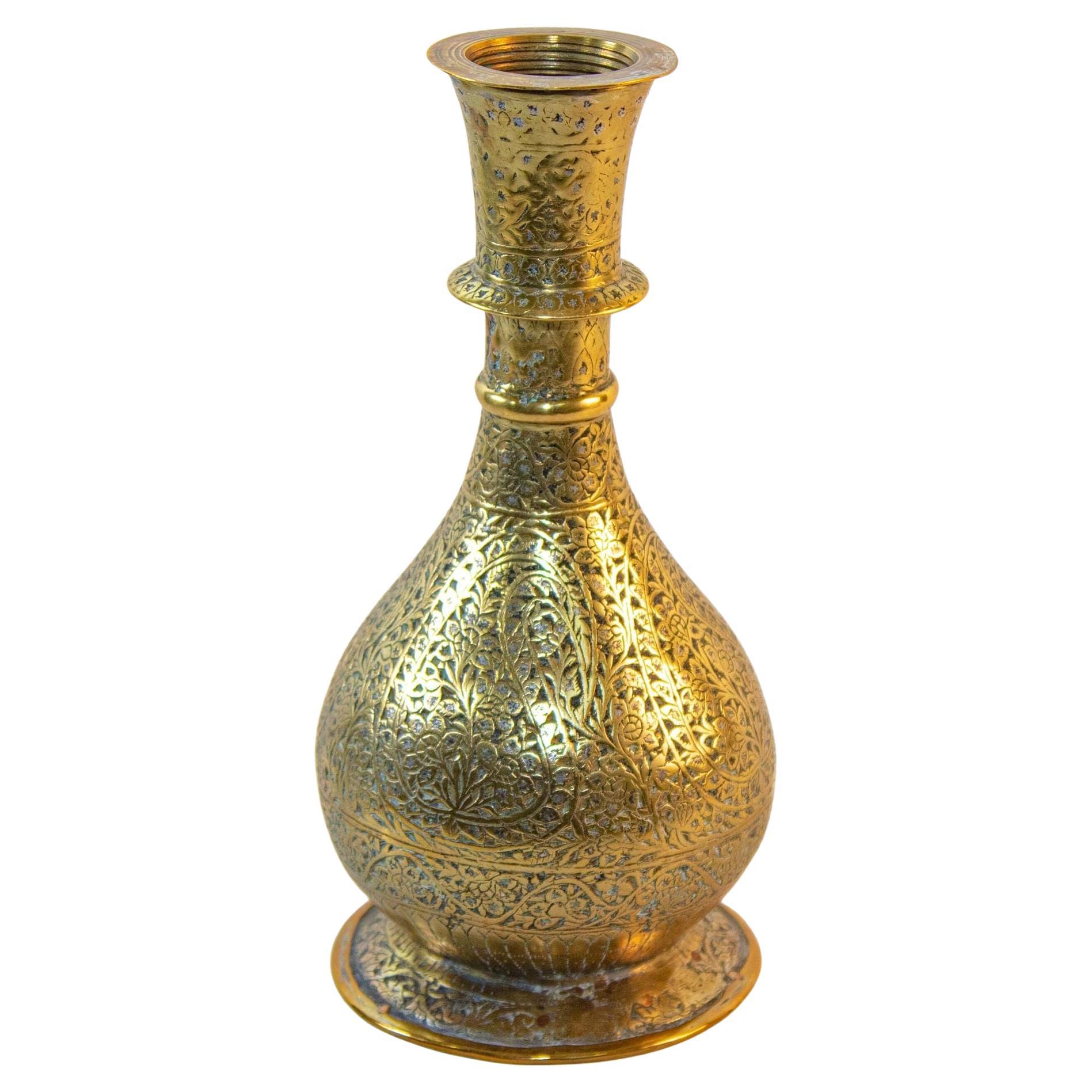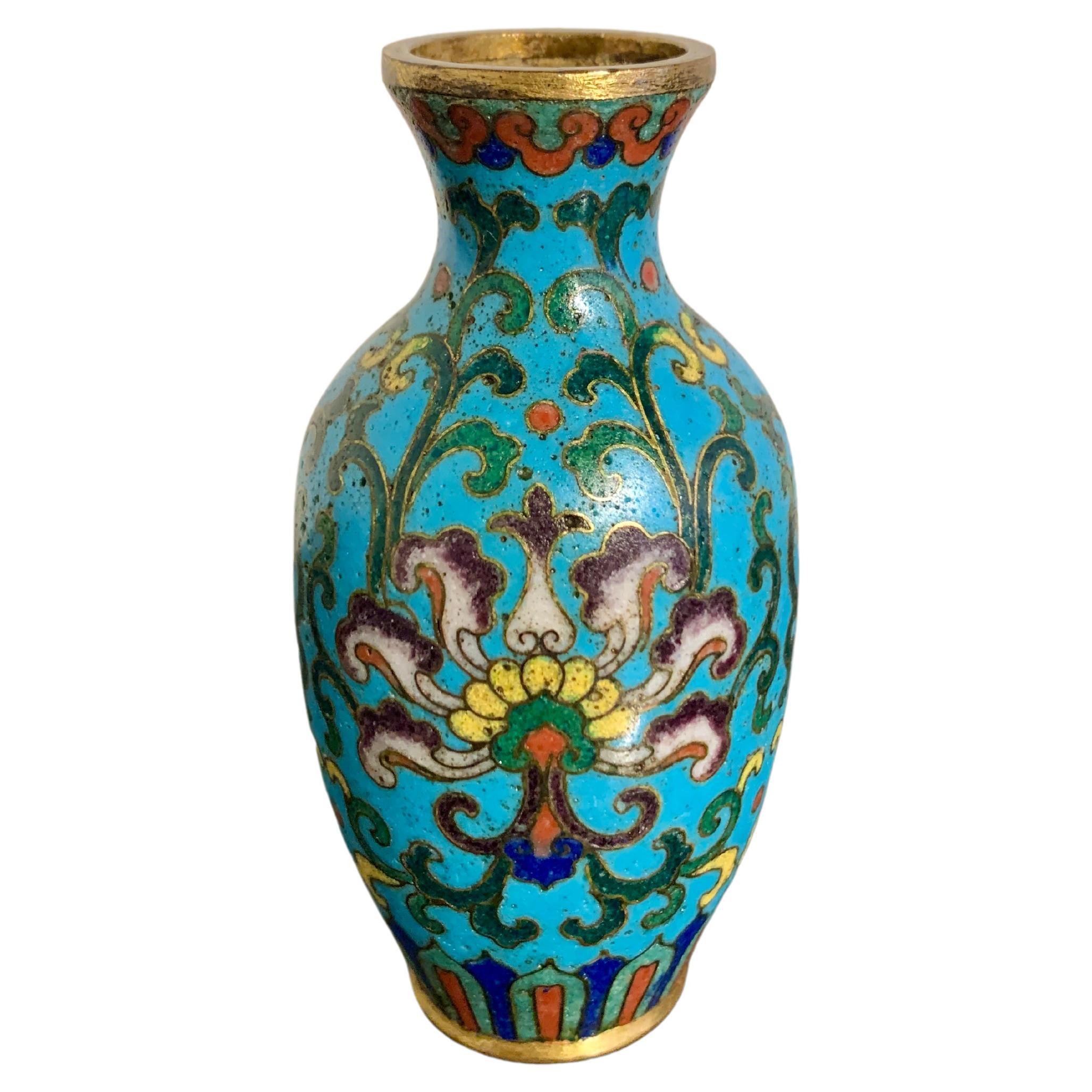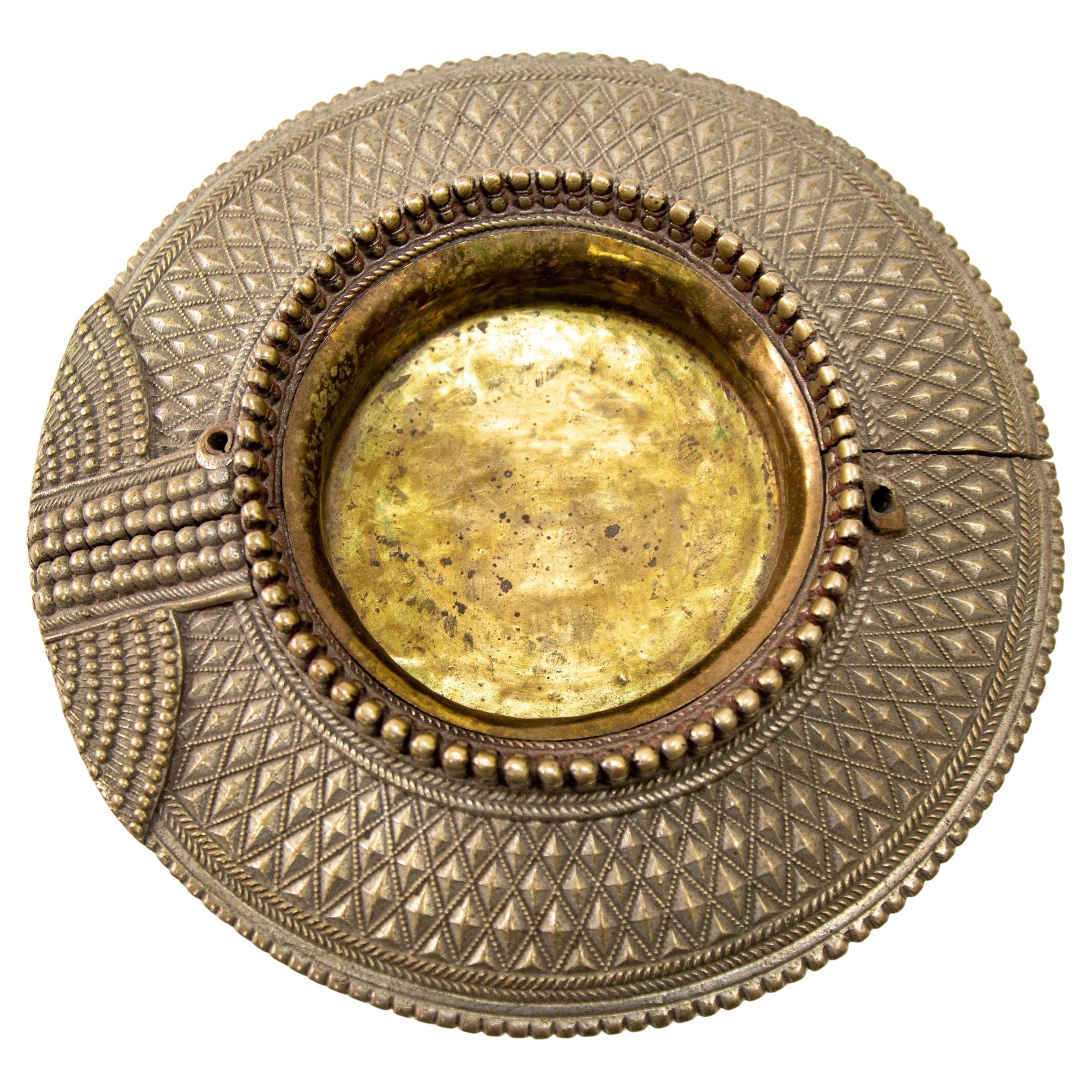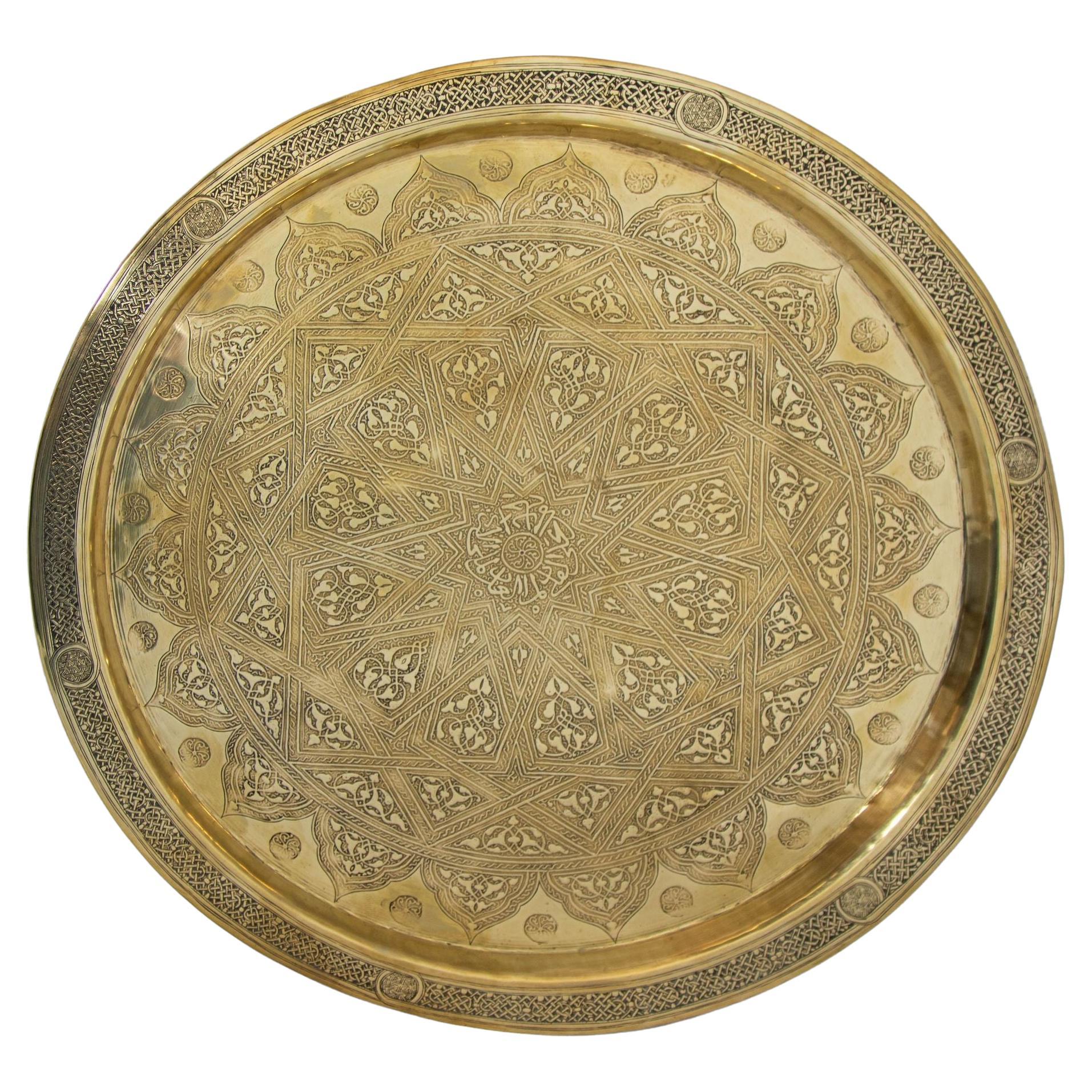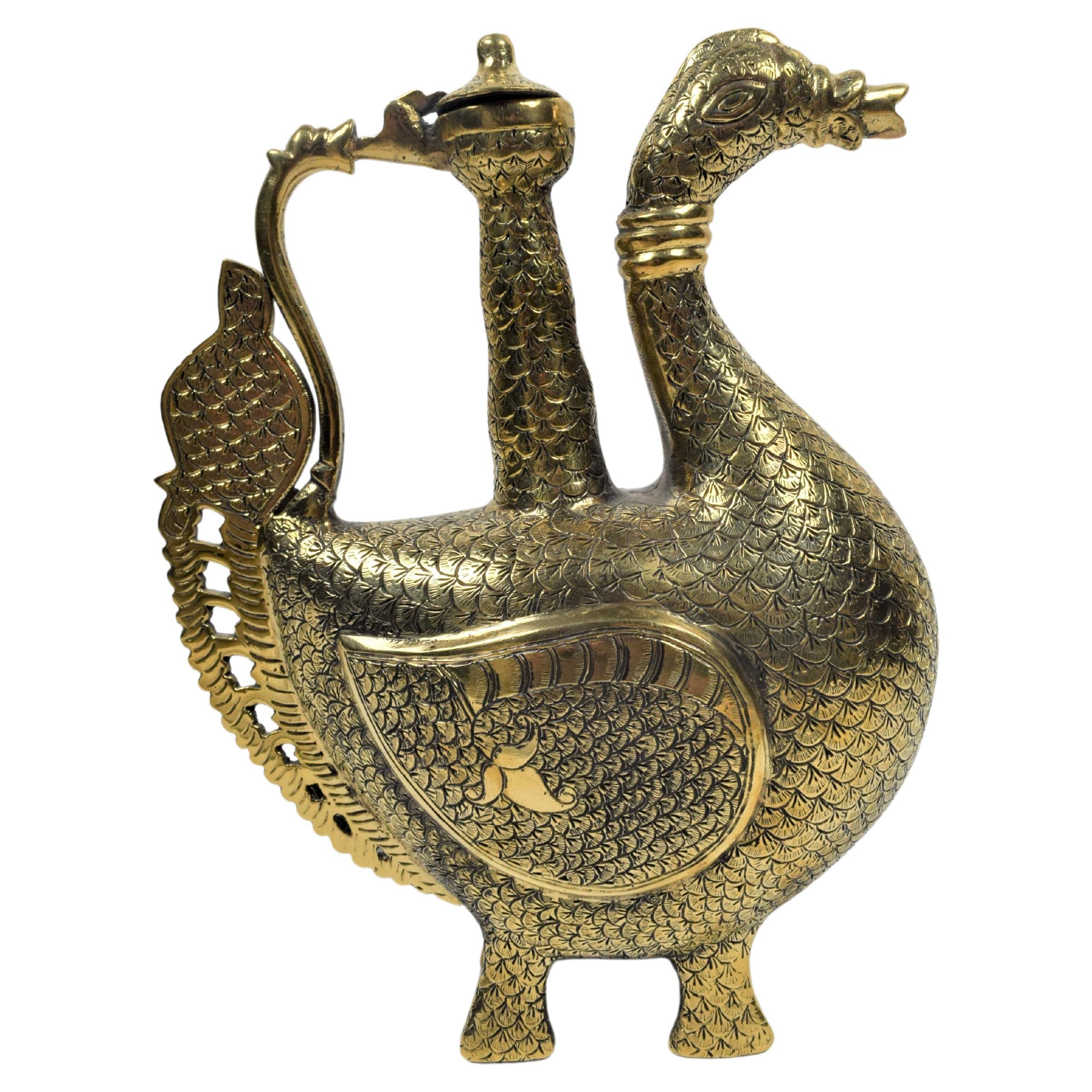Items Similar to 18th/19th Century Mughal Dynasty Gold and Gem Encrusted Jade Dagger
Want more images or videos?
Request additional images or videos from the seller
1 of 13
18th/19th Century Mughal Dynasty Gold and Gem Encrusted Jade Dagger
About the Item
Mughal dynasty gold and gem encrusted Spinach jade dagger having a dark green pistol grip, inlaid with gold, ruby and sapphire applied rosettes to either side. The Damascus single edge blade with serrated back, and gold inlaid design at hilt.
Measures: 14.25" L
Mughal, circa 18th/19th century.
- Dimensions:Height: 14.25 in (36.2 cm)Diameter: 3 in (7.62 cm)
- Style:Islamic (In the Style Of)
- Materials and Techniques:
- Place of Origin:
- Period:
- Date of Manufacture:18th/19th Century
- Condition:Wear consistent with age and use.
- Seller Location:New York, NY
- Reference Number:1stDibs: LU919521387892
About the Seller
4.9
Platinum Seller
These expertly vetted sellers are 1stDibs' most experienced sellers and are rated highest by our customers.
Established in 1820
1stDibs seller since 2011
136 sales on 1stDibs
Typical response time: 2 hours
- ShippingRetrieving quote...Ships From: New York, NY
- Return PolicyA return for this item may be initiated within 1 day of delivery.
More From This SellerView All
- Antique Chinese Cloisonné Enamel Gu Form Vase, 17th/18th Century, Kangxi PeriodLocated in New York, NYA Fantastic, rare, and antique Chinese Cloisonné Enamel Gu Form vase, 17th/18th century, Kangxi Period. This cloisonne vase is extremely rare to find in this quality, condition, age,...Category
Antique Late 17th Century Chinese Qing Metalwork
MaterialsBronze
- 17th Century Chinese Bronze Censer & Cover with Jade Finial Top and Wood BaseLocated in New York, NYA Fantastic and Rare 17th century Chinese Patinated Bronze Censer & Cover with Jade Finial Top and Wood Base. The body of this censor is intricately decorated with Archaistic decoration in hand-chassed relief. The wooden lid is designed with a foliate, leaf-like form, with a gorgeous white jade finial in the shape of a lotus leaf. The gorgeous tripod censer stands...Category
Antique 1690s Chinese Qing Metalwork
MaterialsBronze
- Massive Pair of 19th C. Chinese Cloisonne Enamel Vases with Deer DecorationLocated in New York, NYA massive and impressive Pair of 19th C. Chinese Cloisonne Enamel Vases with '100' Deer Decoration. Decorated with a multitude of deer and birds amongst a meadow with flowering branc...Category
Antique 1850s Chinese Qing Metalwork
MaterialsBronze, Enamel
- A Ming Dynasty Patinated Bronze Relief Work Vase Turned to a LampLocated in New York, NYHailing from the Ming period in 16/17th century, this monumental bronze vase is a fine example of the auspicious decor and markings unique to Chinese furnishings. The vase is cast wi...Category
Antique 17th Century Chinese Ming Metalwork
MaterialsBronze
- Silver Figures of Eight Immortals Yangqinghe Jiuji Marks, Late Qing DynastyLocated in New York, NYImportant and rare silver figures of eight immortals Yangqinghe Jiuji marks, Late Qing dynasty. Each hollow figure portraying one of the immortals in an animated pose, with highly detailed facial features, four pierced with apertures for the insertion of facial hair, clad in finely chased robes, all but two with their characteristic attributes, their bases bearing either two seal marks reading Yangqinghe Jiuji gongyibu and Zhe'ning Hu Qiusheng zao, or three marks in regular script reading Yangqinghe Jiuji gongyibu, Shang and Sheng zuo, original hand-carved wood stands. Measures: 11 1/4in (28.5cm) high (tallest one). The earliest records of the silver atelier known as Yangqinghe date to 1775 in Shanghai...Category
Antique 1890s Chinese Chinese Export Metalwork
MaterialsSilver
- Massive Chinese Cloisonné Vase with Phoenix, Magnolia, Lotus and ChrysanthemumsLocated in New York, NYA massive Chinese blue cloisonné vase or urn depicting a colorful imperial phoenix with gilt bronze wires among birds and butterflies in an imperia...Category
Vintage 1920s Chinese Metalwork
MaterialsEnamel
You May Also Like
- Collection of 18th and 19th Century Arabic Astrolabes and QuadrantLocated in London, GBA collection of 18th and 19th century Arabic astrolabes and quadrant Persian, 18th/19th Century Largest: height 23cm, width 13cm, depth 3cm Smallest: height 6.5cm, width 4.5cm, depth 1.5cm This excellent set of antique astronomical instruments is a selection of five Persian brass astrolabes...Category
Antique Early 19th Century Persian Islamic Scientific Instruments
MaterialsBrass
- Antique Mughal Engraved 19th Century Hookah Base Indo-PersianLocated in North Hollywood, CAA fine antique 19th century Mughal Nargile or hookah pipe base made of brass or bronze, the base with engraving and etching decorations. Mameluke revival brass hookah base, elaborately and elegantly hand decorated, engraved with with a recessed repeated floral motif, leaf, foliage and arabesques. Collectible Antique Indian Islamic Mughal engraved brass hookah base, bottle. This fascinating Indo-Persian Brass Engraved Vessel Hookah Base dates from the 19th century, where it was used as a water base for a hookah, or shisha pipe. In traditional hookah smoking, the base of the pipe is normally the most decorative element of the piece. This vase has a beautiful shape and feel. It is intricately engraved with a arabesque foliage designs Mughal Northern India - 19th century. A nargile or hookah pipe's history dates back as far back as the 16th century, This charming piece has an elegant profile, will make a stunning vase, candle holder or shelf or mantel decoration...Category
Antique Late 19th Century Indian Islamic Vases
MaterialsBrass
- Chinese Cloisonne Incense Tool Vase, Qing Dynasty, 18th/19th Century, ChinaLocated in Austin, TXA small and elegant Chinese cloisonné vase for incense tools, Qing Dynasty, 18th/19th century, China. Made for the scholar's studio, this small refined vase, was used to hold incense tools, including a small pair of tongs or chopsticks and spoon. The tools no longer present. Of miniature baluster vase form, the vase beautify proportioned and decorated in the cloisonné enamel technique, with gilt wires forming the cloisons, or partitions. Within the cloisons, colorful enamels have been expertly laid. The small incense tool vase...Category
Antique Early 1800s Chinese Qing Scholar's Objects
MaterialsCopper, Enamel
- 19th Century Mughal India Raj Style Silver Traditional Anklet Bracelet CatchallLocated in North Hollywood, CALate 19th century Mughal Indian Raj Style Silvered Traditional Anklet Bracelet from India repurposed as a vide poche, catchall, bowl ashtray or just as a beautiful collectible decorative object from India. Antique silver coin and brass heavy metal Dhokra ethnic tribal ankle bracelet that has been repurposed with a brass inner plate that was later added to use the bracelet as a small ashtray or decorative vanity jewelry bowl. The closure was a push pin mechanism that was closed. Dhokra art old ethnic tribal brass traditional ankle bracelet from India, handcrafted of a hollow band of heavy brass decorated with chevron repoussé banding and lost wax granulation. Measures: Height : 1.5 inches. Length : 7.5 inches. Width : 7.5 inches. Diameter: 7.5 inches Brass silver plated. Rare collectible decorative bowl, catchall, ashtray, Mughal Raj style, North India, Rajasthan. Circa 1900's Weight= 2 Lb 6.9 oz Anklets were important components in a suite of jewels worn by women in India. These very heavy examples are fabricated in two pieces, and tightly secured with a near-invisible pin. Some legends suggest that heavy anklets like these could weigh up to 20 pounds and were used to prevent brides from running away from their new families. How it is made: "Dhokra is an ancient folk art tradition prevalent in India in the eastern states of West Bengal, Odisha, Jharkhand and Chhattisgarh. Dhokra craft objects are made through the process of non-ferrous metal casting using the lost-wax casting technique, which is one of the earliest and most advanced methods of metal casting known to human civilization. Its roots can be traced back 4500 years to the ancient city of Mohenjodaro in the Indus Valley Civilization. The name Dokra or Dhokra was used to indicate a group of craftsmen of nomadic type from the Dhokra Damar tribe, scattered over the regions of Bengal, Orisa and Madhya Pradash, whose wares were identified by their beautifully shaped and decorated metal products. The enchanting Dhokra art objects have motifs inspired by indigenous folk...Category
Antique Early 1900s Indian Islamic Metalwork
MaterialsSilver Plate, Brass
- 19th Century Mughal Indo Persian Fine Antique Brass Round Tray 17 inLocated in North Hollywood, CA19th century Mughal Indo Persian fine antique brass round tray hand chased with Islamic calligraphy in Mameluke style in the center. 19th cent...Category
Antique Late 19th Century Indian Islamic Metalwork
MaterialsBrass
- Mughal Brass Peacock Engraved Ewer, Late 19th CenturyLocated in Islamabad, PKThe ewer, a ceremonial pitcher, is shaped in the form of a majestic peacock, a significant motif in Mughal art symbolizing beauty, grace, and regality. The body of the ewer is crafte...Category
Antique Late 19th Century Indian Anglo Raj Metalwork
MaterialsBrass
